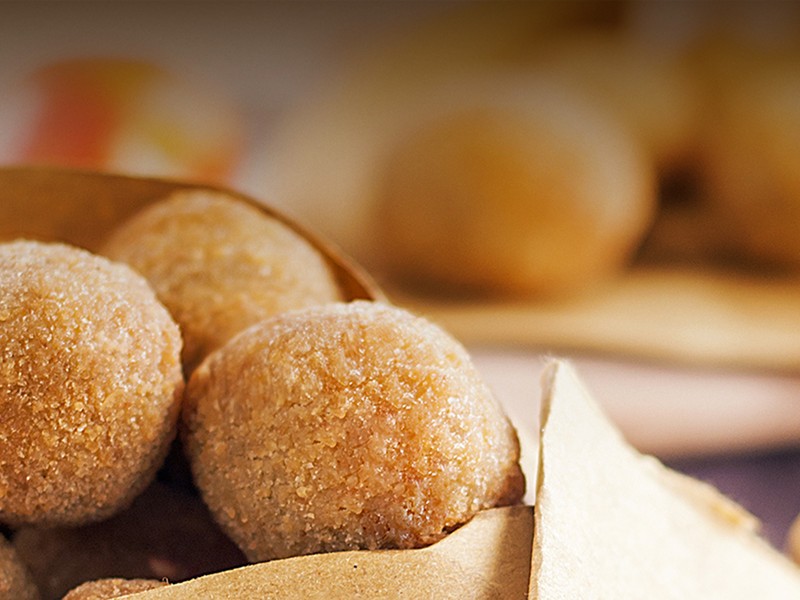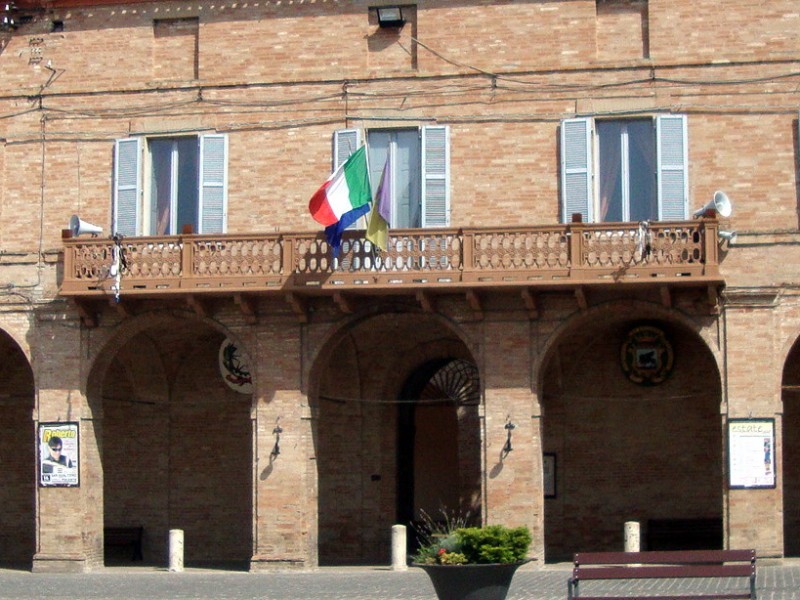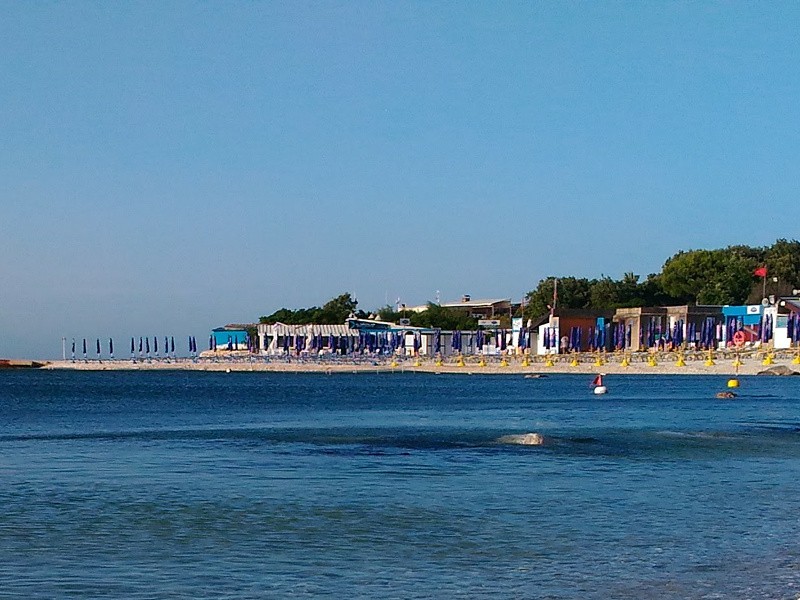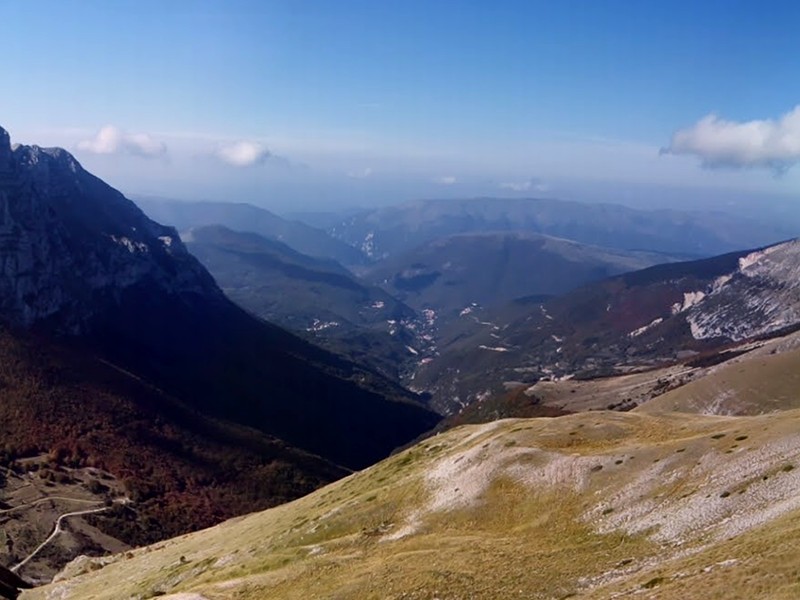Culture and Spirituality
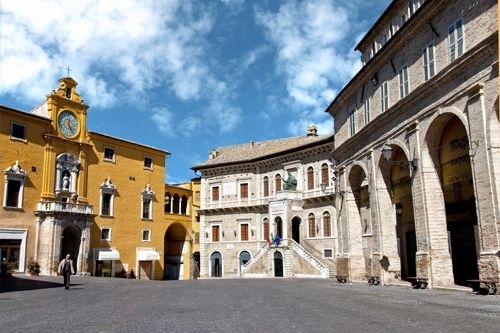
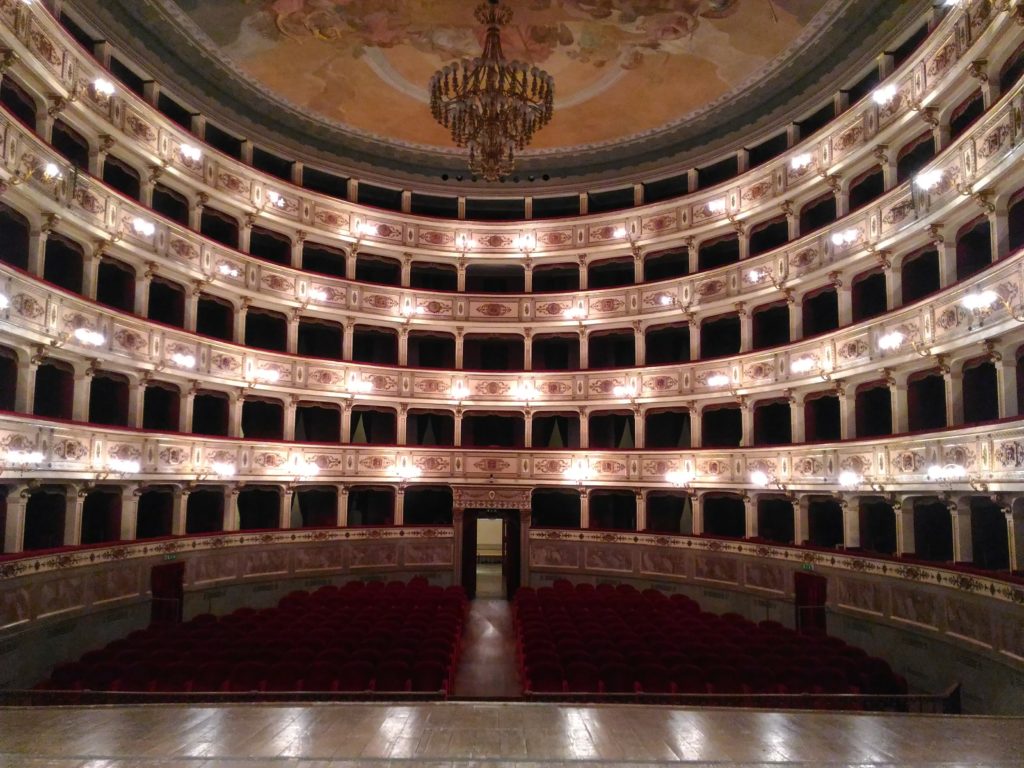
FERMO
The town is located on the top of Sabulo hill and throughout the centuries it remained almost the same with its wonderful town centre. The heart of the town is the Renaissance Piazza del Popolo, formerly Piazza Grande, where there is the XVI-century Palazzo dei Priori, which is home to the Municipal Art Gallery where you can admire the “Nativity” by Rubens; further remarkable palaces surrounding the square are: the Palazzo degli Studi, which houses the town library “Spezioli”, one of the most important and notable libraries in Italy for its books collection, and the Apostolic Palace, built in 1532 as the residence of Governors and papal legates.
Fermo also boasts a prestigious historical theatre, the Teatro dell’Aquila, which is one of the most impressive XVIII-century theatres in the Marche region.
The Roman pools are the evidence of the Roman period in Fermo. They are a hypogeum building heritage dating back to the Augustan period (40 A.D.), covering an area of about 2000 square metres, which was built in order to collect water. By climbing up Girfalco hill, you reach the Cathedral, which preserves the wonderful Romanesque-Gothic façade dating back to 1227.
It’s also worth visiting: the Church of San Francesco, which houses fragments of frescoes by Giuliano da Rimini, one of the most important disciples of Giotto; the Co-Cathedral Church of San Domenico, built in 1233 on the area where once stood the Church of St. Thomas of Canterbury; the Church of Sant’Agostino, one of the most famous religious building in Fermo, decorated with frescoes by Giotto’s school in Rimini, Fabriano and Bologna. The main event taking place in Fermo is the feast of the Virgin Mary Assumption, celebrated on the 15th of August. During this period the Palio takes place.
Since 1982, the Cavalcata dell’Assunta takes place yearly on the 15th of August. Throughout the year, Tipicità Festival celebrates the flavours and all the excellences of Made in Marche.
![]()
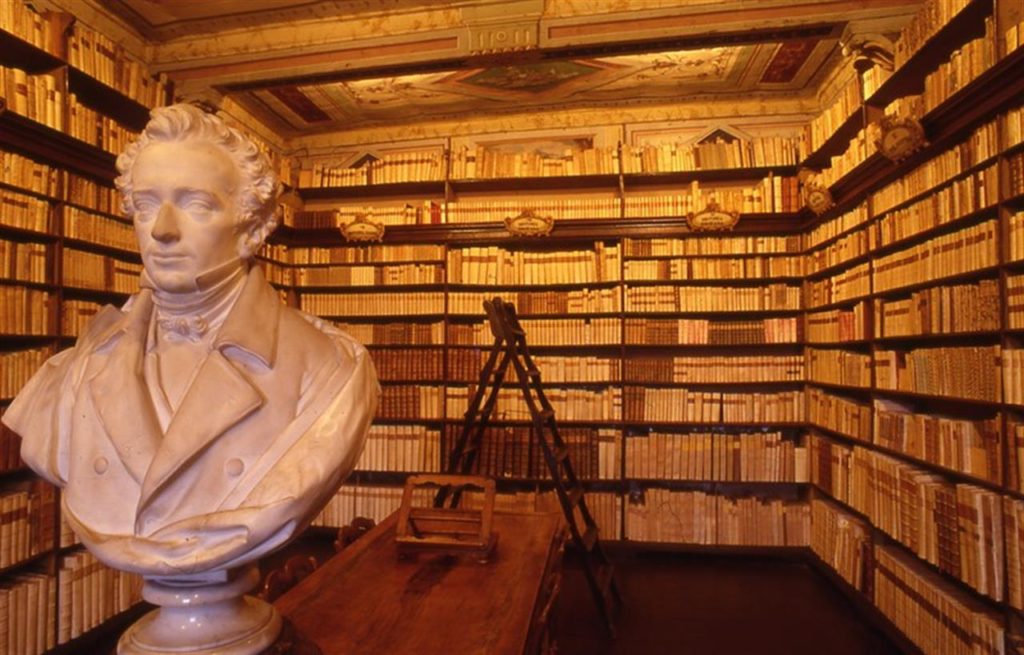
RECANATI
Recanati stands on the famous hills of infinite of the Conero Coastline. It is well-known as the birthplace of the great Italian philosopher and poet, Giacomo Leopardi. The place where he was born and he dedicated himself to his studies has now become a house museum and it is situated in the wonderful historic town centre.
The most remarkable tourist attractions include the places connected with Leopardi: the square of his poem “Il sabato del villaggio”, where there are Palazzo Leopardi and the “House of Silvia”; the “Hill of infinity”.
Recanati is also the home town of the famous Italian tenor and actor, Beniamino Gigli, who was considered as one of the greatest singers of the XX century and is famous all over the world. The Museum Beniamino Gigli is named after him and is situated in the Room of the thirty, where among the peculiarities there are: the recreation of his dressing-room and a tiny theatrical space holding a collection of the tenor’s blow-ups during his most famous performances.
![]()
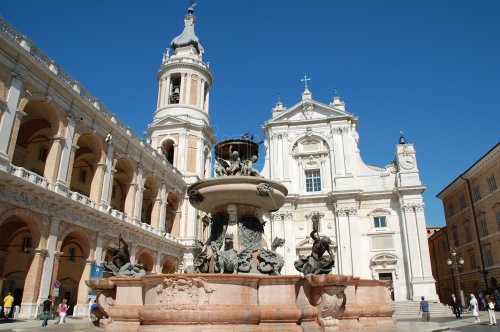
LORETO
Loreto is a popular pilgrimage destination and holds one of the most important treasures of Christianity: the Holy House of Mary of Nazareth, where the Virgin Mary received the annunciation of the birth of Jesus. The town gathers people, prayers, stories and a unique fascination. Tradition has it that the Holy House came to Loreto from Palestine taken by four angels and was placed on the hill where the Sanctuary stands today.
The Holy House hosts the precious statue of Our Lady of Loreto carved in Lebanese cedar, which gives it its famous dark colour. The Sanctuary of Loreto is the impressive building which was erected to warmly welcome pilgrims. It was built in the space of three centuries thanks to the cooperation of a group of talented artists such as Bramante and Sansovino.
Loreto is also rich in culture and prestigious works of art. The Apostolic Palace hosts a large art gallery exhibiting wonderful works, among which the masterpieces by Lorenzo Lotto and Pomarancio. The characteristic town centre is made up of narrow streets where there are shops and workshops.
The Cathedral is a rarity also in terms of architecture: it is a fortress characterised by a patrol path. Leaving the square of the Sanctuary, you can take a stroll in the streets of the town centre, visit the typical shops and stalls, taste local food and come back home remembering the wonderful day!
![]()
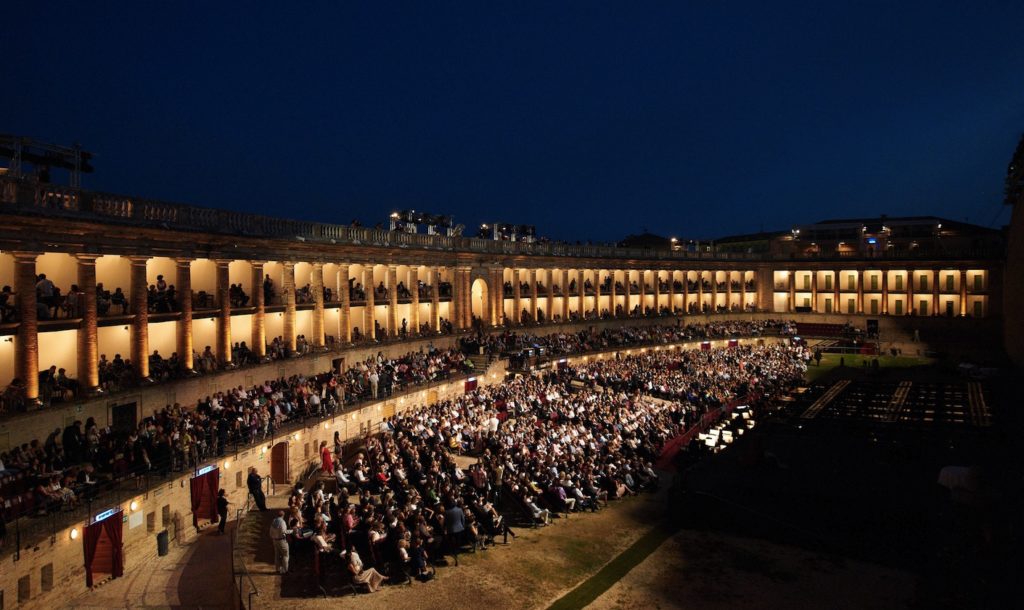
MACERATA
One of the most representative monuments in Macerata is the Sferisterio by Ireneo Aleatri, a wonderful Neoclassical architecture arena hosting every summer a prestigious opera season, the Macerata Opera Festival.
The heart of the town hosts the XVIII-century Palazzo Buonaccorsi, which today holds antique and modern art collections and houses the museum of the carriage. The Room of the Aeneid is the magnificent XVIII-century gallery and is another venue of Palazzo Buonaccorsi: the paintings celebrate the deeds of Aeneas, the vault is frescoed with the mythological marriage of Bacchus and Ariadne before the Olympian Gods.
In the town centre there are other remarkable buildings: the Town Hall, the Merchants’ Lodge, a little wonderful Renaissance piece of architecture erected by the Cardinal Alessandro Farnese; the Palace of the Prefecture, a grim brick building, once housing Papal legates, the Church of San Paolo, the Civic Tower, which is 64 metres high and from whose terrace you can enjoy a view extending from the Sibillini Mountains to the Adriatic Sea, the XVIII-century Lauro Rossi Theatre, Palazzo Ricci hosting an Italian XX-century art collection.
![]()
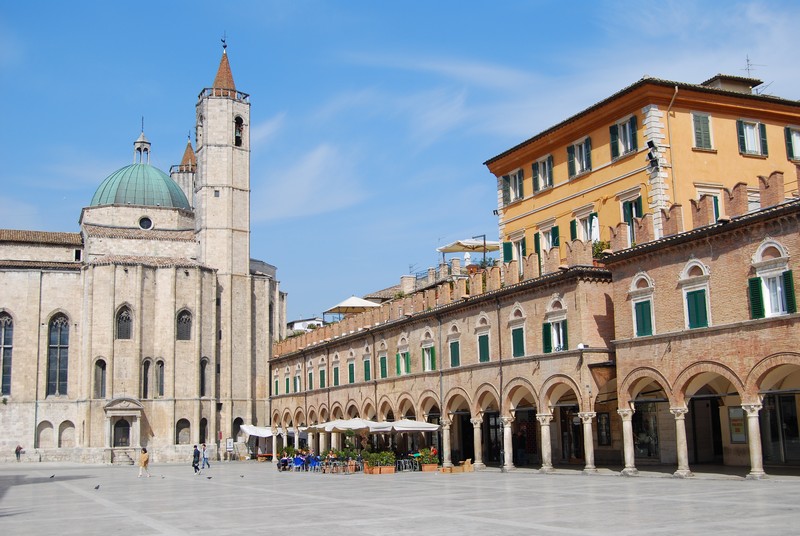
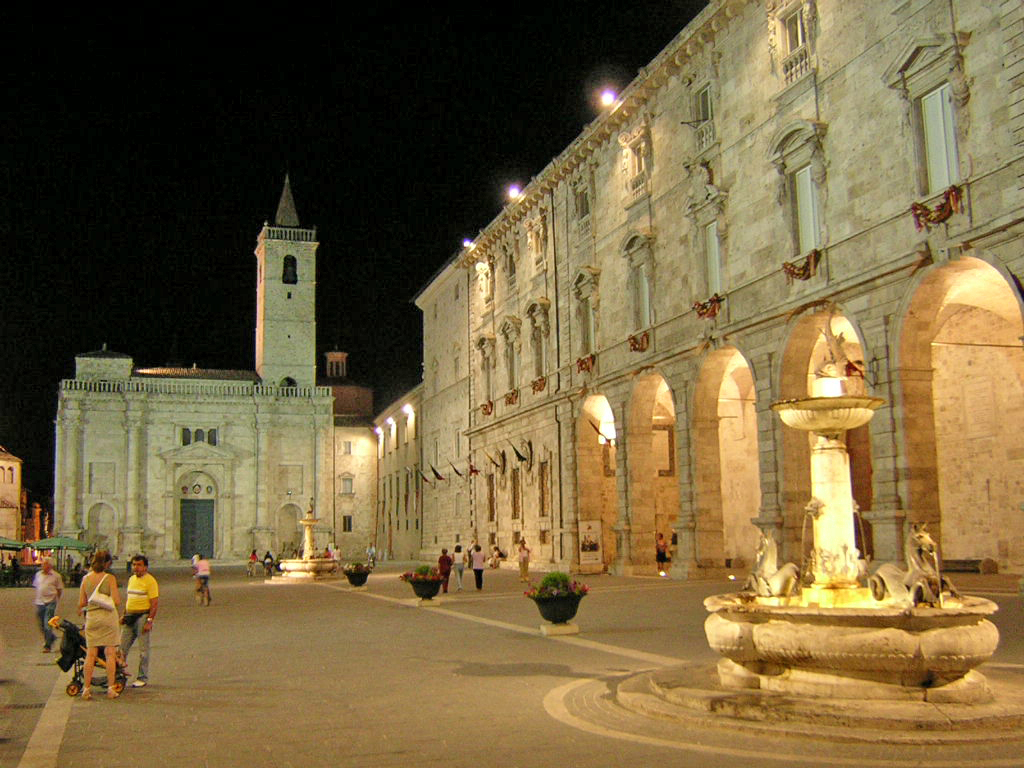
ASCOLI PICENO
The historic centre is one of the most visited in the region and central Italy for being rich in art and architecture. It was built almost entirely with travertine marble and preserves many noble and bell towers, this is the reason why it is named The town of a hundred towers.
The most remarkable buildings are: the Renaissance Piazza del Popolo hosting the XIII-century Palazzo dei Capitani del Popolo which today houses the Municipality, the famous Art Nouveau style Caffé Meletti and the Church of San Francesco, to which the elegant Merchants’ Lodge dated 1513 leans against.
Another elegant urban place is the oldest square in Ascoli Piceno, Piazza Arringo, where stand buildings such as: the medieval Baptistery of San Giovanni, the Cathedral of Sant’Emidio housing the crypt dedicated to the patron saint and the great polyptych of Sant’Emidio dated 1473 by Carlo Crivelli; the Bishop’s Palace, the Palazzo dell’Arrengo housing the Municipal Art Gallery and other municipal offices.
The most remarkable monuments are: the Roman Solestà bridge, the ruins of the Roman theatre, the caves of the Annunziata, a huge Roman building, the Pia Fortress, the Malatesta Fort, the XIX-century Ventidio Basso Theatre, the Palazzetto Longobardo which is flanked by Ercolani Tower, one of the remaining towers of the over two hundred mentioned in Medieval documents. Near the town there is Castel Trosino Fortress, an ancient Lombard settlement near the Castellano river.
The major events taking place in Ascoli Piceno throughout the year are: Ascoli Piceno’s Carnival (February-March), the Fritto misto all’italiana (Festival of fried food ) (April-May), the Antiques’ market (every third Sunday of the month) and the historical equestrian tournament of Quintana (August).
![]()
Don’t miss the other beauties of the territory
![]()



